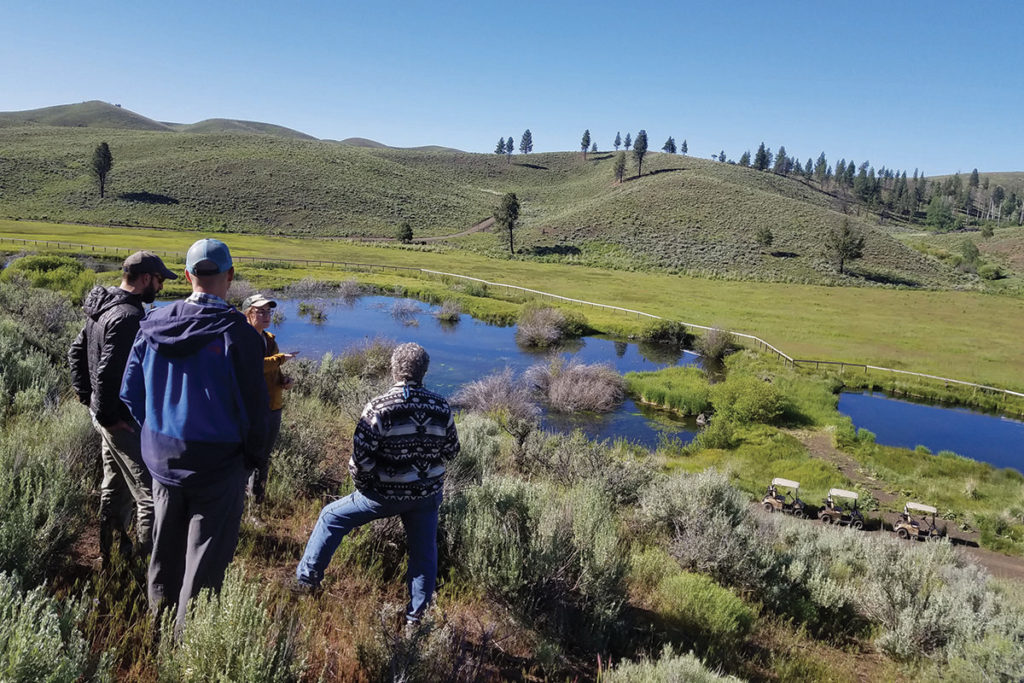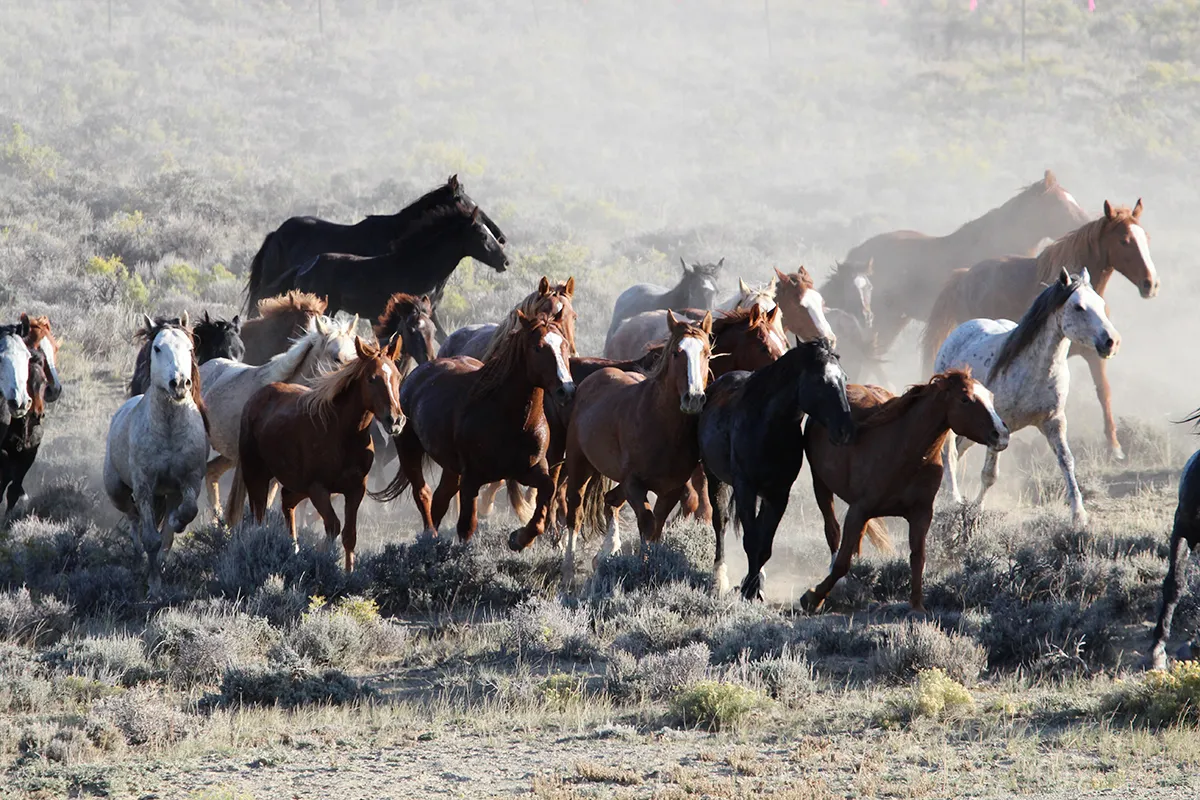
This article was originally published in Discourse.
It’s nothing more than “people on the Front Range—a bunch of city dudes” trying to “cram it down our throats.” That’s how one Colorado rancher described a ballot initiative that mandated the state’s impending reintroduction of the gray wolf, after its nearly century-long absence from the state. In 2020, Colorado voters approved a measure to reintroduce wolves by a margin of 50.9% to 49.1%. The vote could hardly have split along a starker urban-rural divide: City dwellers in Denver, Colorado Springs and other population centers and ski towns voted in favor of reintroduction, and virtually every rural county voted against it. Essentially, the people who would bear none of the costs of managing wolves, which are protected by the federal government as an endangered species, wanted them to return. Yet most of the people who would bear the costs, in the form of killed livestock and other disruptions from the predators, didn’t want anything to do with them.
If you’re looking for a modern symbol of today’s hyperpolarized culture wars, you could do worse than Canis lupus. Predator politics in the West are not only emblematic of environmental conflicts, but they also mirror broader trends in contemporary politics. Polarization has deepened divisions and eroded trust in society, turning many environmental issues into culture war battlegrounds often amplified by rural-urban divisions. Whether it’s the water wars of the Southwest, the timber wars of the Pacific Northwest or the wolf wars of the Northern Rockies, environmental debates often devolve into bitter fights between competing groups. Battle lines fall along familiar divides—farmers vs. urbanites, developers vs. wildlife advocates, ranchers vs. environmentalists—with seemingly little or no room for dialogue or cooperation.
But this supposedly intractable problem can be ameliorated—and the answer can be found in innovative market approaches that connect competing groups to resolve environmental challenges through cooperation instead of conflict.
Wolf Wars
One reason for controversies like the gray wolf debate is the dominance of “political environmentalism,” where different groups lobby for their preferred top-down solutions in an effort to “win” the fight. That’s because these fights are viewed as “zero-sum”—groups believe that only one side can win, and the other will necessarily lose. Under this status quo approach, environmentalists are more likely to use regulation or litigation—or sometimes moral reprobation—to achieve their aims than to come to the negotiating table in good faith. On the other side, rural communities, private landowners and conservative politicians are more likely to dismiss or demonize environmentalists than to try to understand or address their concerns.
These conflicts are prominent when it comes to water, land and wildlife. “Whiskey is for drinking, water is for fighting” is a common phrase in Western water policy. Land-use decisions on public or private lands are notoriously conflict-ridden, sometimes bordering on Wild West-style violence. And wildlife issues, especially when they involve large carnivores, arouse intense controversy. Several decades ago, when one Montana environmentalist, Hank Fischer, met with ranchers in the Yellowstone region to discuss reintroducing wolves, his proposal was met with hostility. “Hank Fischer!” a rancher shouted as the meeting began, “Ain’t nobody killed you yet?”
Wolves have caused strife for decades as they’ve returned to Western states from Wyoming to Washington, either by human reintroduction or southward migration from Canada back into more of their historical range. Wolves don’t simply predate on livestock; they also cause stress that can lower pregnancy rates and yield underweight calves. Additionally, many ranches invest time and money in deterrents such as electric fencing, noisemakers or range riders to help look after herds. Ranchers, therefore, generally see wolves as a threat to their livelihoods, and perhaps a symbol of government regulators or far-away outsiders with no skin in the game who want to trample on their way of life.
Federal efforts to remove protections for the species, whose numbers have expanded significantly over the years, have frequently been overturned by courts, most recently last year. Before that decision restored protections, Montana and Idaho—where federal protections for wolves were removed via legislative interventions by Congress—had adopted liberal wolf-hunting regulations, simultaneously horrifying wildlife activists and delighting rural communities who live with wolves. A New Yorker headline from last year concisely illustrated how divisive and unproductive debates over the species have become: “Killing Wolves To Own the Libs?”
A Different Shade of Green
Environmentalism doesn’t have to be this way. We can pursue a different shade of green—one that harnesses property rights and markets to improve environmental outcomes and promote cooperation instead of conflict. This approach—the approach that our organization, the Property and Environment Research Center (PERC) has pursued for more than four decades—advances solutions that enable people and groups with vastly different values and preferences to resolve their competing demands over environmental resources through positive-sum market exchange rather than political or legal fights.
In the past few years, we’ve increasingly taken our research off of the shelf to put our ideas about conservation into practice on the ground. We’ve begun to develop innovative market tools to address specific conservation challenges and then work with environmental organizations and landowners to implement those solutions in the real world. Support from Mercatus’ Pluralism and Civil Exchange Program is helping us formalize this aspect of our work. We’ve implemented several on-the-ground projects to advance win-win, market solutions that bridge deep cultural and ideological divisions to address environmental challenges. The early results have been encouraging. And they started with another prominent but conflict-ridden species: the Rocky Mountain elk.
You don’t need to watch “Yellowstone” to know that subdivision and development loom as threats to Western open spaces. That’s true of Paradise Valley, Montana, just north of Yellowstone National Park, where thousands of elk spend a significant part of the winter on private lands. Lower-lying private property generally has better access to water and forage than public land at higher elevations. So the large, private farms and ranches in the region provide essential winter habitats for elk and a variety of wildlife.
Like wolves, elk bring plenty of costs to private landowners. They compete with livestock for forage and hay, trample crops, damage fences, attract predators and can even spread disease to cattle. For people who value the wildlife and open spaces of Paradise Valley, it’s critical to conserve habitat there amid the increasing pressures of population growth and development.
In 2021, PERC created Montana’s first-ever “elk occupancy agreement” with a ranching family in Paradise Valley. The voluntary, privately funded agreement pays them to conserve critical winter habitat for migratory elk. Under the agreement, a mile-plus-long wildlife-friendly fence was built to separate the ranch’s livestock from a portion of the ranch that now serves as important elk winter habitat. Funded by groups and individuals with an interest in conserving the region’s elk populations, the scheme compensates ranchers for maintaining and enhancing nearly 500 acres of winter habitat for Yellowstone’s migratory elk herds. The agreement helped test the model, and we’ll soon launch a second agreement with another rancher in the region.
We’ve also established a privately funded compensation program to enhance wildlife tolerance throughout Paradise Valley by helping ranchers address the costs associated with brucellosis, a disease unique to the Yellowstone ecosystem. Elk can transmit the disease to cattle, which causes calves to be aborted and requires ranchers to quarantine or slaughter their entire livestock herds, an expensive proposition that could bring financial ruin. Working in partnership with local conservation and sportsmen organizations, the compensation fund empowers the groups who benefit from healthy wildlife populations to share in the costs of sustaining them—creating, in essence, a market solution for conserving elk and open space.
These initiatives may seem like small-scale, one-off wildlife projects in our backyard, but they represent much more. In each case, the projects bring together groups that otherwise would not work together, such as rural ranchers and urban environmentalists, to find common ground and develop mutually beneficial solutions. They also serve as proofs of concept for new tools and models that can be scaled up and applied elsewhere. They allow us to test, analyze and improve our ideas on the ground, gaining real-world feedback along the way. And they demonstrate market-based alternatives to government-run conservation programs, which are notoriously sluggish, inflexible and risk-averse.
One aim in experimenting with new market tools is that, if successful, these approaches can be adapted and scaled to address a host of other challenges. Water scarcity, wildfire risk, habitat degradation and many other conservation challenges demand similar innovative solutions that can bridge divides to solve real-world problems. Ultimately, we aim to show how innovation can enable collaborative market exchanges to resolve issues that often devolve into political or social conflict. The key is connecting the suppliers of environmental amenities (often private landowners) with the beneficiaries of conservation (environmentalists, sportsmen, conservation groups and the wider public).
Lasting Solutions
There’s an irony to Colorado’s voter-mandated requirement to bring wolves back. Less than a year after the vote, wildlife officials spotted a den of wolf pups in the state, the first evidence since the 1940s that the animals are breeding there. The species had already begun to make its way back on its own. Even without a narrowly decided vote along rural-urban lines, these polarized populaces with differing values and interests would have to work out a way to live with wolves—and each other.
Rather than offering cooperative ways to coexist, political environmentalism often results in “winner-takes-all” battles that make conservation outcomes vulnerable to shifts in political power. In one recent example, an endangered species rule established by the Obama administration was rescinded by the Trump administration, before then being reinstated by the Biden administration. Whether it’s wildlife protection, land management, water conservation or countless other challenges, this back-and-forth risks leaving everyone unhappy. Wolves won’t somehow become popular with ranchers in the rural West because federal officials decide that they should remain on an endangered species list. Nor will many cityfolk happily abide permissive hunting regulations that Western state governments establish for the canines.
In contrast to zero-sum environmentalism, markets foster collaboration that can bring disparate groups, such as rural landowners and urban wildlife advocates, to the table in pursuit of a common goal. Given how much land, water and wildlife is stewarded by private landowners, successful conservation will depend on no less. Wolves may seem like they’re here to stay, but their successful, lasting recovery will rely on finding solutions that can work for ranchers as much as they do for environmentalists.




